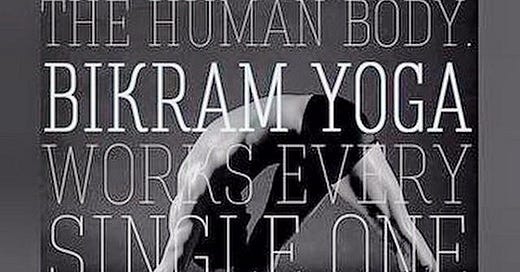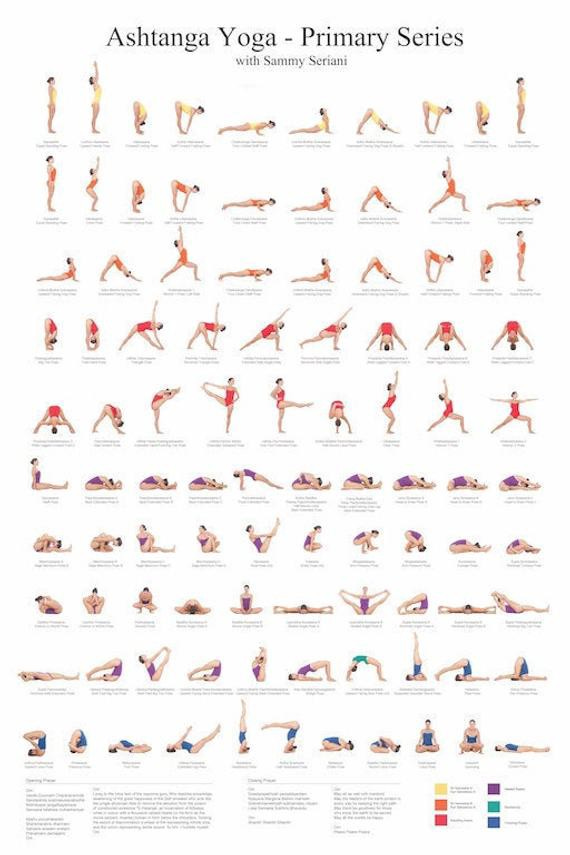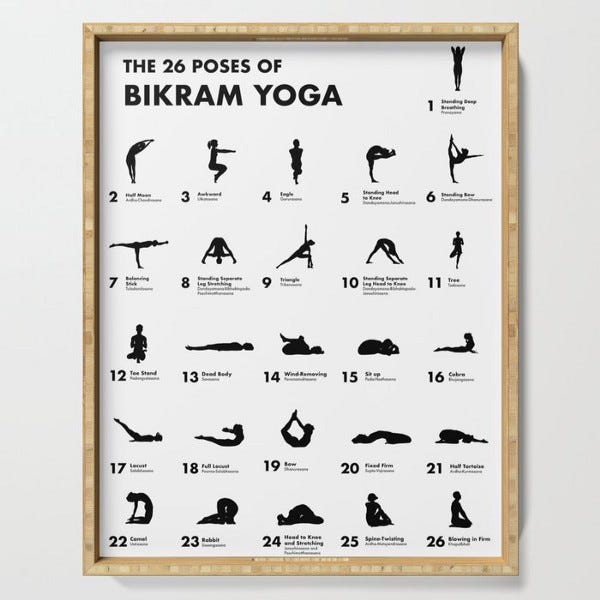Why (Bikram) Original Hot Yoga is Still My Favorite Practice
Hint: It’s the Postures AND it’s the Heat!
Hint: It’s the Postures AND the Heat!
I love to do all kinds of exercise and workouts. I love to ride my bike around town. I love to walk around my neighborhood or a track for three miles at a time. I love to lift weights. I love HIIT workouts and pilates. But what I love most of all is “Hot Yoga,” the “Original 26 + 2” poses developed in the early 70s by Indian American Bikram Choudhury as a form of hatha yoga.
Hatha yoga is considered a general category that includes most yoga styles. It is an old system that includes the practice of asanas (yoga postures) and pranayama (breathing exercises), which help bring peace to the mind and body, meant to prepare the body for deeper spiritual practices such as meditation.
About Bikram Yoga
Mr. Choudhury developed a unique series of twenty-six poses and two breathing exercises from the thousands of yoga postures that have been around for more than 5,000 years, and named it “Bikram Yoga,” after himself. He started teaching his series in California in the 1970s, often calling it “Yoga of the Stars” since many of his students were from Hollywood or were otherwise well-known and/or wealthy.
The series, like Ashtanga yoga, another type of hatha yoga, is done in exactly the same sequence and takes about 90 minutes to complete. It is practiced in a studio heated to about 105 degrees Fahrenheit with about 40 percent humidity. Bikram said that the heat and humidity are supposed to mimic the weather in India and that the combination also helps muscles and joints relax for better performance while practicing.
For centuries, yoga was originally taught almost one-on-one from the teacher to the student, but as the practice moved west from India in the late 19th and early 20th century, yoga teachers began to teach to small and large groups.
In the late 1920s, K. Pattabhi Jois, a yoga devotee in India, developed the Ashtanga Yoga Series that teaches the asanas, the third limb of the eight-limbed yoga tradition. With Ashtanga, the practitioner performs a series of vinyasas, which link each pose to a breath.
In the 1990s, Bikram began teaching his particular method to groups of people in nine-week courses held around the world several times a year. Those people were then “certified” to teach the Bikram Yoga sequence in their own studios as franchisees of Bikram. Soon there were hundreds of Bikram Yoga studios all over the world, each teaching Bikram Yoga in exactly the way Bikram had designed, and Bikram himself became very wealthy.
The Bikram Yoga Name Becomes Toxic for Studio Owners
However, just like he named his series after himself, Bikram’s narcissism and sense of self-importance spiraled out of control and he was sued for sexual harassment and assault and was accused of racism and homophobia. Bikram also tried to copyright his particular sequence of yoga poses and tried to sue anyone who either tried to teach the series without being trained directly by him or those who deviated even a little from his sequence or the “dialogue,” his exact words he wanted to teachers to say.
Over the last several years, things got so bad legally for Bikram that he left the U.S. and moved back to India to avoid the lawsuits. At about the same time, most of the studios named after Bikram ended their franchise contracts and renamed their studios anything but “Bikram” while still teaching the 26+2 poses of the Bikram series. Bikram Choudhury may have turned out to be a terrible person, but the yoga practice series he designed is still very popular and has tens of thousands of faithful practitioners worldwide.
To replace the teacher training and certifications previously offered by Bikram, a group of Bikram-certified yoga teachers
Many yoga teachers now offer something called “hot yoga,” but often their practice is not the same as Bikram Yoga. The poses are not in the exact same order and the room is not kept as hot and/or humid. The Bikram series is now officially called the “Original 26 + 2,” even though a lot of people still confuse it with “hot yoga.”
The Original 26 + 2 is so named because the practice includes 26 poses and two breathing exercises, most performed twice in the exact same order, for the 90-minute practice. Each pose has specific mental and physical benefits specific mental and physical benefits, which are beautifully explained here.
Why I Love the Original Hot Yoga
I was introduced to then-named Bikram Yoga by my sister, who is a former national Rhythmic Gymnastics champion and a member of the USA Gymnastics Hall of Fame. She and her family live in Harlem, New York. She came to Detroit to visit our parents and said she was going to drive to Plymouth, Michigan to take a yoga class. I asked her why in the world she, a gymnast and elite athlete, was doing yoga, and was she going to drive 30 miles each way to attend a class! She tried to explain to me the benefits of this type of yoga, but I didn’t get it at first.
My sister kept talking about Bikram Yoga, but although I had tried other forms of yoga, it took me a year to get up the nerve to attend my first Bikram Yoga class. I think what scared me was the heat. One hundred and five degrees. Wow! I didn’t believe I would survive. That is until I walked into a Bikram Yoga studio. After the very first class, I was hooked, heat, humidity, and all.
The heat and humidity actually felt good to me, and I immediately liked the way the poses were always taught in the same order so that after a few classes, I didn’t have to “think” about which pose was next. I was working all of the muscles and joints of my body and the ninety minutes seemed to fly by.
After the first breathing exercise, the first part of the class is called the “Standing Series,” and is considered the “warmup” for the second part of the class that is performed on the floor. The standing series includes a lot of balancing poses and poses that develop a lot of arm, leg, and core strength. Most of the poses also take a lot of mental concentration.
After a well-earned rest lying down silently in “Savasana” for about two minutes, it is time for the Floor Series. All of the poses in the floor series work on the upper, middle, and lower spine (sometimes all three spine areas at once), and they feel so good. Most people sit all day hunched forward over their desks and computers, and stretching your back and spine backward and in other directions helps to counteract all of that forward-bending.
Unlike with weight-lifting, you can practice yoga every day without having to take a break in between practices. Besides the heat, the consistency is what I loved and still love to this day. I also love that wherever I travel anywhere in the world if there is an Original Hot Yoga studio, I can practice and know exactly how the poses will go and how I will feel afterward.
I suffer from extreme sciatica and I also have a few compressed vertebrae that affect my spine. I have also suffered from a few very serious non-yoga related injuries and I have found that I get great relief from my regular original hot yoga practice. I usually go to class 4–6 times a week, and if for some reason I miss class for a while, my body definitely notices!
My home studio (like all indoor exercise facilities) has been closed since COVID-19 hit us last March, but the owner has worked hard to reconfigure the building for the highest amount of safety, including stronger air purifiers, more time between scheduled classes to performing studio cleaning, no-touch protocols, etc. We’ve been holding virtual classes and outdoor classes with social distancing in the meantime. Most yogis either love or hate practicing in the hot and humid studio environment, but I can’t wait to get back into the hot room; even when it’s near 100 degrees in the Michigan summer.
About Me
I am a native Detroiter, a wife, mother, grandmother, solopreneur, and homeowner. I would love for you to follow me on my personal Facebook and on my personal Instagram. Any opinions expressed in this publication are my own.
I invite you to read the stories in my other publications: Your Business Your Brand Creatively and Detroit Ink Publishing.







